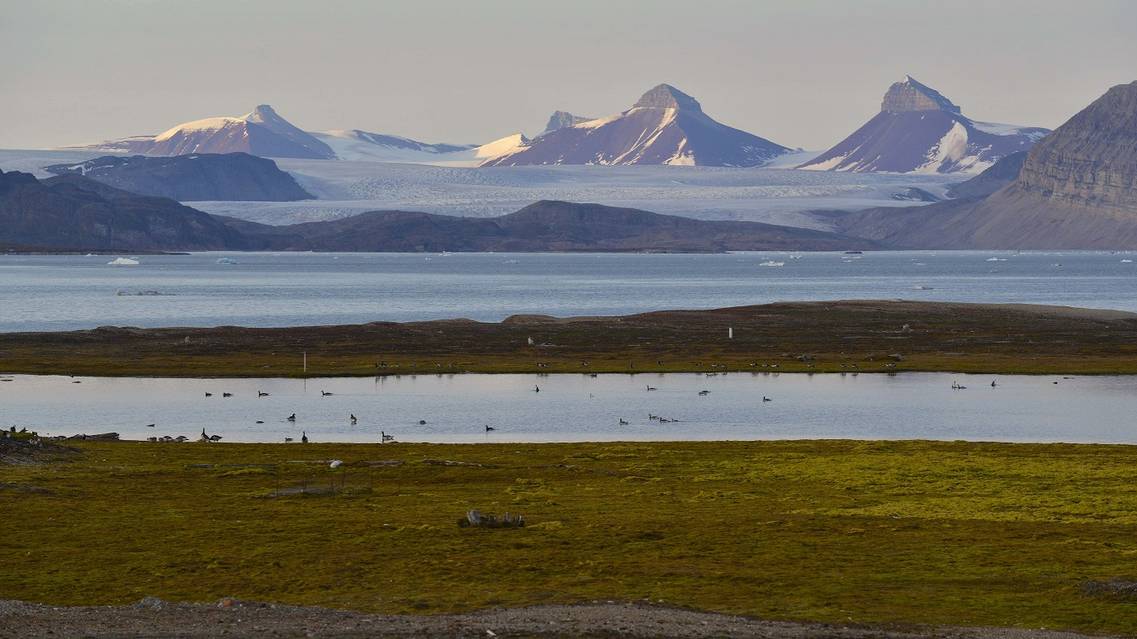-

Le oche migrano in Artico durante l’estate e contribuiscono a fertilizzare la tundra / Barnacle geese dwell in the Arctic during summer and fertilise the tundra (Credit M.S. Giamberini)
-

Uno scatto durante le misure di flussi di CO2; sullo sfondo la stazione di ricerca di Ny Ålesund / A snapshot taken during CO2 flux measurements; in the background the Ny Ålesund research station (Credit M.S. Giamberini)
-

Brevi fiumi formati dai ghiacciai che fondono attraversano la tundra per sfociare nei fiordi dell’isola di Spitsbergen / Rivers flow through the tundra from the melting glaciers to the fjords in Spitsbergen (Credits M.S. Giamberini)
-

La vegetazione della tundra delle Svalbard è prostrata ma ricca di colori, come questa sassifraga / The vegetation of the Svalbard tundra is prostrate but rich in colour, like this saxifrage (Credits M.S. Giamberini)
-

Molte specie di piante artiche, come questa silene, vivono anche alle alte quote alpine / Several species of Arctic plants, such as this “cushion pink”, live also in high-altitude environments on the Alps (Credits A. Provenzale)
-

I ghiacciai nel bacino del Bayelva, con le renne che pascolano nella tundra, in una tipica giornata artica / Glaciers in the Bayelva basin, with reindeers grazing on the tundra, in a typical Arctic day (Credits A. Provenzale)
-

I ghiacciai nel bacino del Bayelva, con le renne che pascolano nella tundra, in una tipica giornata artica / Glaciers in the Bayelva basin, with reindeers grazing on the tundra, in a typical Arctic da (Credits A. Provenzale)
-

Una vista aerea delle montagne fra Longyearbyen e Ny Alesund sull’isola di Spitsbergen / An aerial view of the mountain ranges between Longyearbyean and Ny Alesund on Spitsbergen Island (Credits A. Provenzale)








